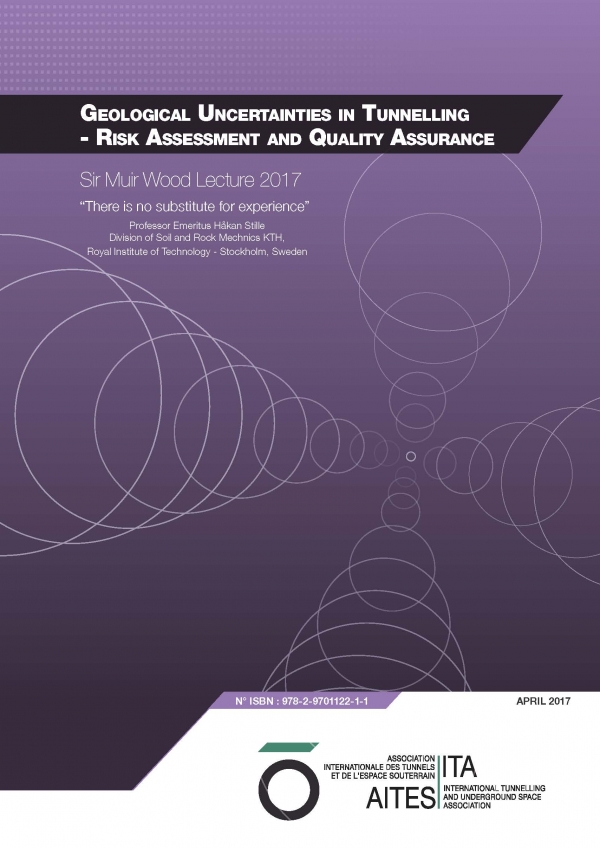Geological Uncertainties in Tunnelling
- Risk Assessment and Quality Assurance
Sir Muir Wood Lecture 2017
“There is no substitute for experience”
Professor Emeritus Håkan Stille
Division of Soil and Rock Mechnics KTH,
Royal Institute of Technology - Stockholm, Sweden
Risk is always present in rock tunnelling. The uncertainties connected to design and execution, especially geological uncertainties, are larger and to some degree different from those in other types of civil engineering projects. This implies that systems for handing the uncertainties like ISO 31 000 “Risk management – Principles and guidelines” must be adapted to the special conditions prevailing in underground projects. Risk management is, consequently, closely connected to project management. The work can be carried out in different ways in relation to the complexity of the project. However, site organizations with teams responsible for the geotechnical and geological follow-up is an important part of risk management in tunnelling. The project manager must have the overall responsibility. The uncertainties have to be treated as an integrated part with a set of activities within the project work and the ordinary project organization. Project models like Props, developed by Ericsson Infocom based on tollgates and milestones, are also very adequate. The base for risk evaluation should be the epistemic nature of geological uncertainties. Updating by observation and investigation can reduce the uncertainties. Systematic approaches for collecting additional information should be implemented. Lead-time to make adequate decisions may be obtained by identifying and looking for warning bells. In many situations such an approach will prevent unwanted events, like tunnel collapse, high water ingress and similar problems from happening. Rock design is affected by geological uncertainties. Models and material properties of the rock mass will have a much higher degree of uncertainty than other building material like concrete and steel. This implies that verification of the design cannot only be built on calculations as normal in civil engineering. The observational approach in tunnelling will therefore in most cases be mandatory and can be regarded as part of the risk assessment and quality control. A common approach in tunnel design is the adoption of prescriptive measures. Application of rock classification systems belongs to this category. The limitations of such approach need to be understood in order to achieve an adequate risk treatment. The overall quality is governed by two factors “doing the right things” and “doing the things right”. The special focus on the first issue comes from the special uncertainties connected to underground works. The system is called “Dual quality system”. Geotechnical category as defined in the new Euro Code (EC7) is an essential part in applying a dual quality system but it has to be adapted to rock engineering problems. The above described approach for risk assessments and quality assurance in rock engineering and tunnelling is based on experiences from tunnel projects and supported by theories of uncertainties.
